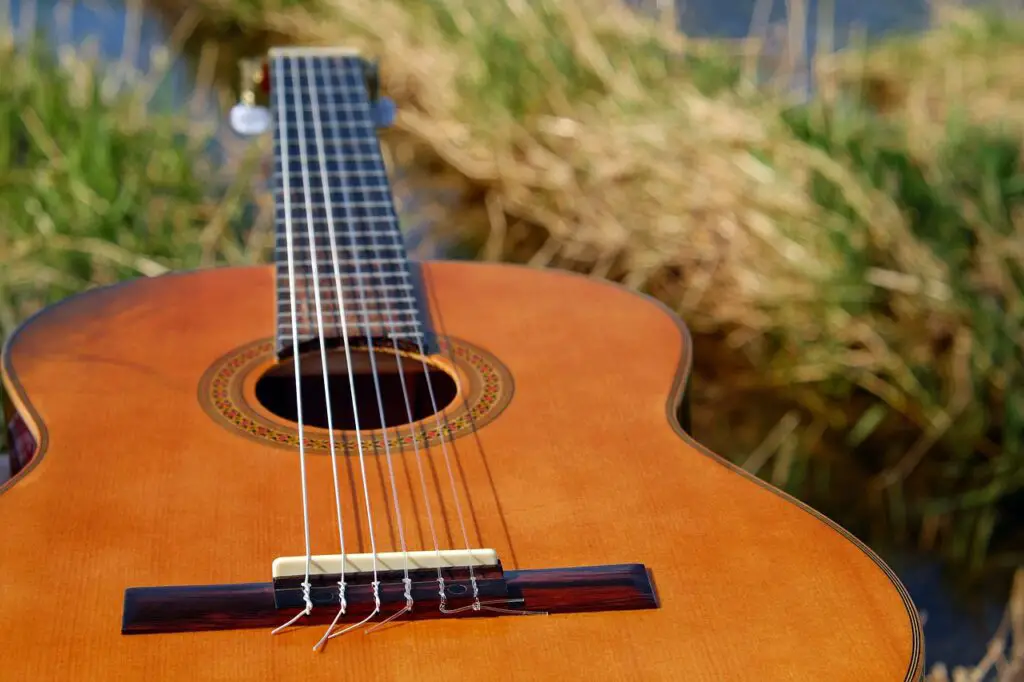Guitar is a beloved instrument for millions of players, i.e., from novices to seasoned pros. While many guitarists focus on amplifiers, pedals, and pickups to achieve the desired tone, it’s essential to recognize that the guitars neck plays an integral role in producing its distinctive sound.
The shape, wood type, and construction all play an important role in producing the unique tonal characteristics of a guitar neck.
The way a player grips their guitar can affect the sound produced. Furthermore, the wood used during construction also affects sound quality and response.
Impact of Neck Wood on Guitar Tone
The vibrations generated by a guitar string result in the creation of sound waves, which subsequently bounce off different surfaces.
As a result of these reflections, the sound finally reaching our ears is altered.
One of the most significant surfaces the sound waves reflect off is the guitar itself, including the tone wood.
The type of wood used for the neck of the guitar can alter the behavior of these vibrations, thus influencing the resulting tone.
It is worth noting that this effect is more pronounced in acoustic guitars than in electric guitars since the former relies more on wood to amplify the sound.
Nevertheless, the type of wood used for the neck of the guitar can still affect the tone of both guitars.
Understanding How Guitars Create Sound
While it is commonly understood that sound is produced on a musical instrument by plucking the strings, it is essential to gain deeper insight into how this process works.
When the strings of a guitar are plucked, they begin to vibrate, creating sound waves that travel through the air.
In the case of an electric guitar, pickups detect these vibrations and convert them into electrical signals that are then sent to an amplifier for amplification.
This amplification increases the volume of the sound, making it louder and allowing musicians to manipulate the sound further using effects pedals.
On the other hand, acoustic guitars create sound waves through the strings’ vibration, which are then projected through the sound hole and amplified by the guitar’s body.
The wood used in construction plays a significant role in determining the quality and character of this sound, as it affects resonance, sustain, and overall tonal balance.
Does The Neck Of Guitar Affect Playability?
The neck plays a significant role in creating the instrument’s unique sound.
The sound produced by a guitar neck is influenced by several factors, including the type of wood used, the neck profile’s thickness, and the fretboard’s profile.
Together these elements work in concert to shape and define the tone produced.
The wood used for the guitar neck can immensely affect its sustained brightness, warmth, and resonance.
Furthermore, thickness plays a major role in shaping sound – thicker necks provide more sustain and thicker tones.
Moreover, the neck profile, or shape and contour of the back of the neck, affects playability and sound.
What Is The Importance Of The Guitar Neck?
The neck is critical in crafting acoustic guitar voice, being one of the primary tonal elements along with the body, bridge, fingerboard, and strings.
The density and stiffness of wood used for guitar necks can drastically impact how they transmit sound from the strings to the body.
The neck’s role in producing tone comes from its capacity to transfer vibrations from the strings to the guitar’s body.
As these strings vibrate, they send energy directly into the neck, amplifying and reverberating.
For this reason, the wood used for guitar necks plays an essential role in producing an instrument’s distinctive sound.
What Are The Consequences Of Playing The Guitar Excessively?
While practicing the guitar is essential for improving skills and mastering techniques, excessive practice can lead to severe consequences.
Prolonged practice periods can result in physical injuries, burnout, and depression.
Professional musicians are not the only ones who may experience overuse injuries such as tendonitis, carpal tunnel syndrome, and muscle strains.
These types of injuries can also result from excessive practice. These injuries can cause long-term damage and can be highly debilitating, hindering the ability to play the guitar.
Burnout and depression are also risks associated with over-practicing the guitar.
As with any skill or activity, it is important to strike a balance and not push the body and mind beyond their limits.
Can Guitar Neck Relief Effect In Tonation?
In guitar playing, “neck relief” refers to the space between strings and frets along the length of the instrument’s neck.
This gap can enormously affect playability and intonation; more neck relief makes it harder for some players to play comfortably, leading to a less-than-optimal experience. Furthermore, excessive neck relief may result in poor intonation – fretted notes may sound sharp – thus decreasing overall sound quality and making playing the guitar less desirable. Maintaining proper neck relief levels is essential to avoid such issues.
Doing so will guarantee optimal playability and intonation when the guitar strings are at their proper height above the frets for ease of play and excellent sound quality.
Furthermore, adequate neck relief helps reduce the chance of developing injuries such as tendinitis or carpal tunnel syndrome caused by playing with an incorrectly adjusted neck.
Which Factor Influence Over Guitar Tone?
The way a musician plays their guitar, including how they fret chords and strum or pick, plays an essential role in creating its distinct sound.
However, the tone of a guitar is determined by a combination of various factors, including the type of wood used for its neck and body.
The choice of wood can significantly impact the guitars sustain, brightness, warmth, resonance, and overall tonality.
Using a combination of woods for the neck, body, and top of the guitar, makes it possible to achieve a well-balanced sound with strong low-end and distinct midrange frequencies.
Maple is known for its bright, snappy characteristic, which can be enhanced with mahogany to add warmth and depth.
On the other hand, rosewood fretboards produce warmer tones with more resonance at the top end.
Conclusion
The guitar neck plays an integral role in producing the overall tone of a guitar.
Wood type, thickness, profile, and fretboard affect sound production. The neck also affects how loudly your instrument resonates acoustically.
Differences in wood density and stiffness can alter how the neck translates string sound to the body, resulting in a unique tonal quality.
Moreover, excessive neck relief can result in poor intonation, making the guitar less desirable to play.
Therefore, maintaining appropriate levels of neck relief and adjusting the neck correctly is essential for optimal playability and intonation, resulting in a better playing experience and improved sound quality.





